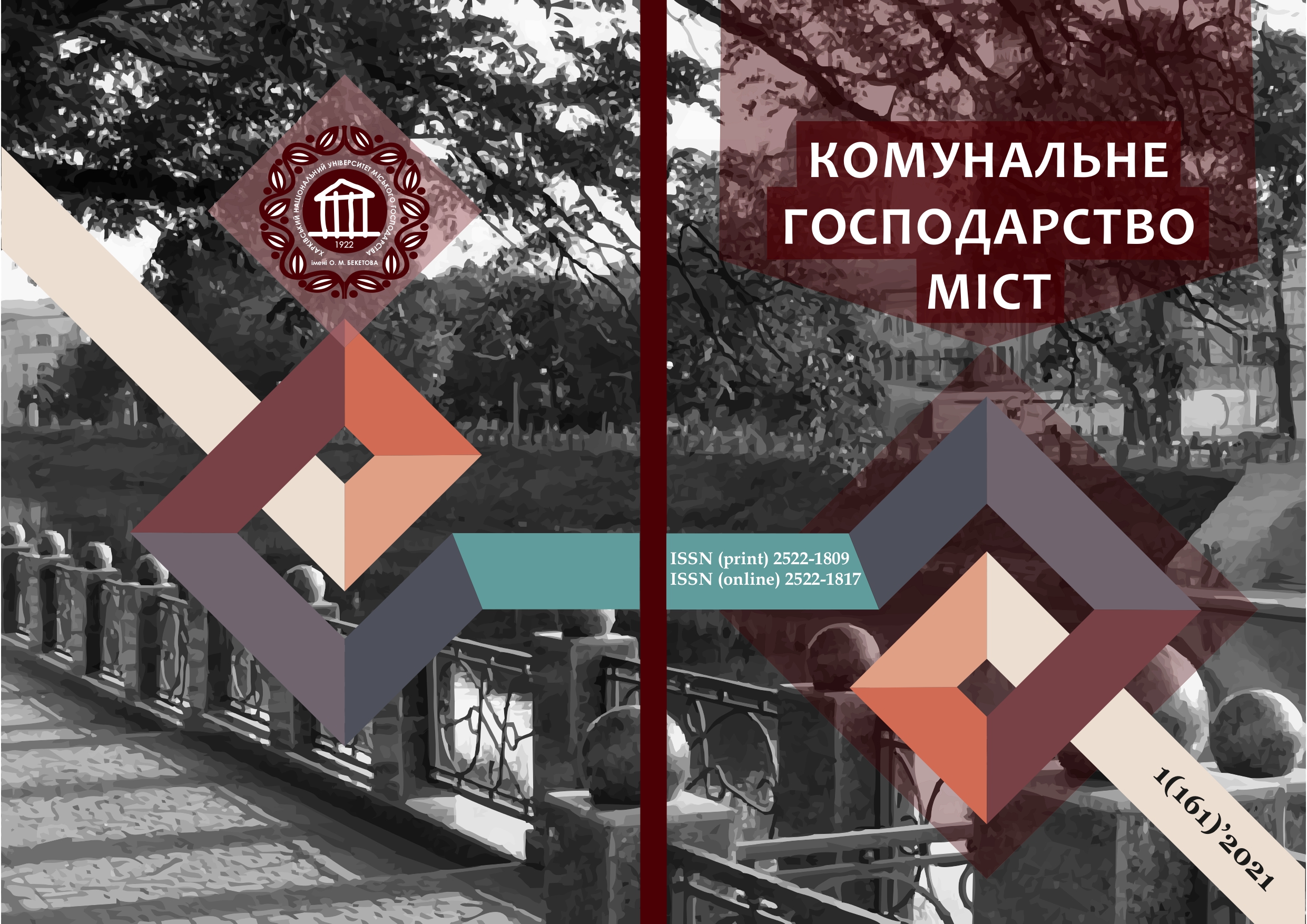CONTACT CLARIFIERS IN THE PREPARATION OF DRINKING WATER
Array
Keywords:
contact coagulation, clarifiers, drinking water, filtration, environmental safety of drinking water, contact medium, coagulant.Abstract
The article discusses the problem of improving the technological process of clarifying water for drinking purposes using contact clarifiers, which allows to reduce the consumption of reagents, improve water quality, reduce capital and operating costs, and reduce the cost of water.
The method of water treatment, based on the use of the phenomenon of contact coagulation, is called the method of contact clarification. This method is able to provide a high and stable effect under various physicochemical conditions of coagulation, changing according to the seasons of the year with lower doses of coagulant than in the usual scheme of water treatment with sedimentation and filtration.
It was found that the contact coagulation of suspended and colloidal impurities of water on sand grains when water moves through granular filters is faster, more complete, more stable when the physicochemical conditions of coagulation change according to the seasons of the year. And, finally, at lower doses of coagulant than the usual coagulation of these impurities in the free volume of water in flocculation chambers and settling tanks.
It is advisable to use contact clarifier in one-stage treatment schemes for low-turbid colored waters, when the total content of suspended solids in the water supplied to the contact clarifiers, including the suspension that is formed as a result of the introduction of reagents into the water, does not exceed 150 mg/dm3. With a higher suspension content in water, the water consumption for flushing contact clarifiers increases sharply.
It was found that the zones of contact coagulation when using a conventional coagulant solution are slightly smaller than when treating water with a modified solution of aluminum sulfate (the latter takes place on the curves of contact coagulation of both low-turbid and turbid waters). The analysis of contact coagulation zones shows that when treating water using a modified coagulant solution, it makes it possible to reduce the calculated doses of coagulant by an average of 30-45% without deteriorating the quality of water clarification.
References
2. Zhurba, M.G., Lyubina, T.N., Mezentseva, S.A., Zhurba, J.M. Priemyshev, Yu.R., Myakishev, V.A. (2004). Water supply and sanitary engineering, 1.
3. Mints, D.M. (1964). Theoretical basis of water treatment technology. Stroyizdat, 156.
4. Kulikov, N., Naimanov, A., Omelchenko, N., Chernyshev, V. (2009). Teoretical basis of water purification. Donetsk: Publishing house «Nouvelage» (Donetsk branch), 298.
5. Draginskiy, V., Alekseeva, L., Getmantsev, S. (2005). Coagulation in the technology of natural water purification. Moscow: Nauka, 576.
6. Babenkov, S.D. (1977). Purification of water by coagulants. Moscow: Nauka, 356.
7. Dushkin, S., Martynov, S., Dushkin S. (2019). Intensification of work of contact clarifiers during the drinking water preparation. Journal of Water and Development, 41 (IV-VI), 55-60, DOI 10.2478/jwld, 0027.
8. Dushkin, S.S., Dushkin, S.S. (2017). Improving the efficiency of contact clarifiers in the preparation of drinking water, Problems of water supply, water supply and hydraulic engineering: Science and technology collection, 28.: KNUBA, 408.
9. Stanislav Dushkin, Tamara Shevchenko. (2020). Applying a modified aluminium sulfate solution in the processes of drinking water preparation. EastearnEuropean Journal of Enterprise Technologies, 4 (10-106), 26-36. https://doi.org/10.3103/S1068364X19100041.
10. Raff, P.A. Selyukov, A.V., Baikova, I.S. (2011). The technology of contact water clarification in the conditions of the Volga water intake in Kazan. Scientific-technical and industrial journal «Water supply and sanitary engineering», 6. 25–34.
11. Epoyan, M., Blagodarnaya, G.I., Dushkin, S.S., Stashuk, V.A. Improving the efficiency of the structures in the purification of drinking water. (2013). Monograph. 190.
12. Kulsky, L.A., Strokach, P.P. Technology of natural water treatment. (1986). K. : Vishcha shkola, 352.
13. Dushkin, S.S. Adoption of ecological safety in the preparation of drinking water from a modified quartz preservation of filter materials. (2019). Science and technology journal «TEB». 54–59.
14. Tugay, A., Orlov, V. (2009). Water supply: textbook. Kyiv: Knowledge, 735.
15. Dushkin, S.S., Blagodarnaya, G.I., Tikhonyuk, V.O. Improving the reliability of contact clarifiers of urban water treatment facilities. (1999). Kommunalnoe khoziajstvo horodov. Nauk.-techn. sb., 19, 137–138.
Downloads
Published
How to Cite
Issue
Section
License
The authors who publish in this collection agree with the following terms:
• The authors reserve the right to authorship of their work and give the magazine the right to first publish this work under the terms of license CC BY-NC-ND 4.0 (with the Designation of Authorship - Non-Commercial - Without Derivatives 4.0 International), which allows others to freely distribute the published work with a mandatory reference to the authors of the original work and the first publication of the work in this magazine.
• Authors have the right to make independent extra-exclusive work agreements in the form in which they were published by this magazine (for example, posting work in an electronic repository of an institution or publishing as part of a monograph), provided that the link to the first publication of the work in this journal is maintained. .
• Journal policy allows and encourages the publication of manuscripts on the Internet (for example, in institutions' repositories or on personal websites), both before the publication of this manuscript and during its editorial work, as it contributes to the emergence of productive scientific discussion and positively affects the efficiency and dynamics of the citation of the published work (see The Effect of Open Access).

